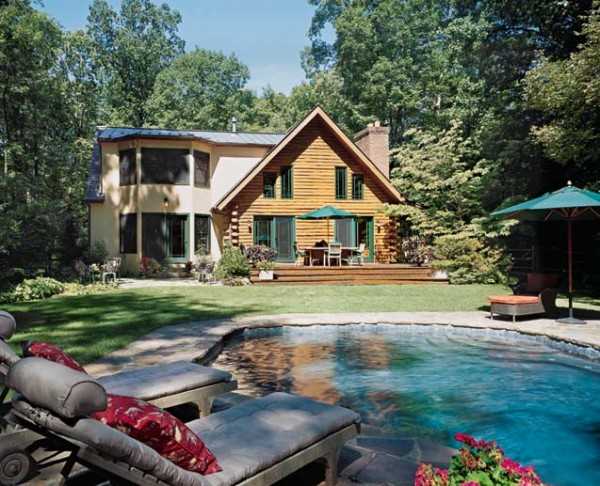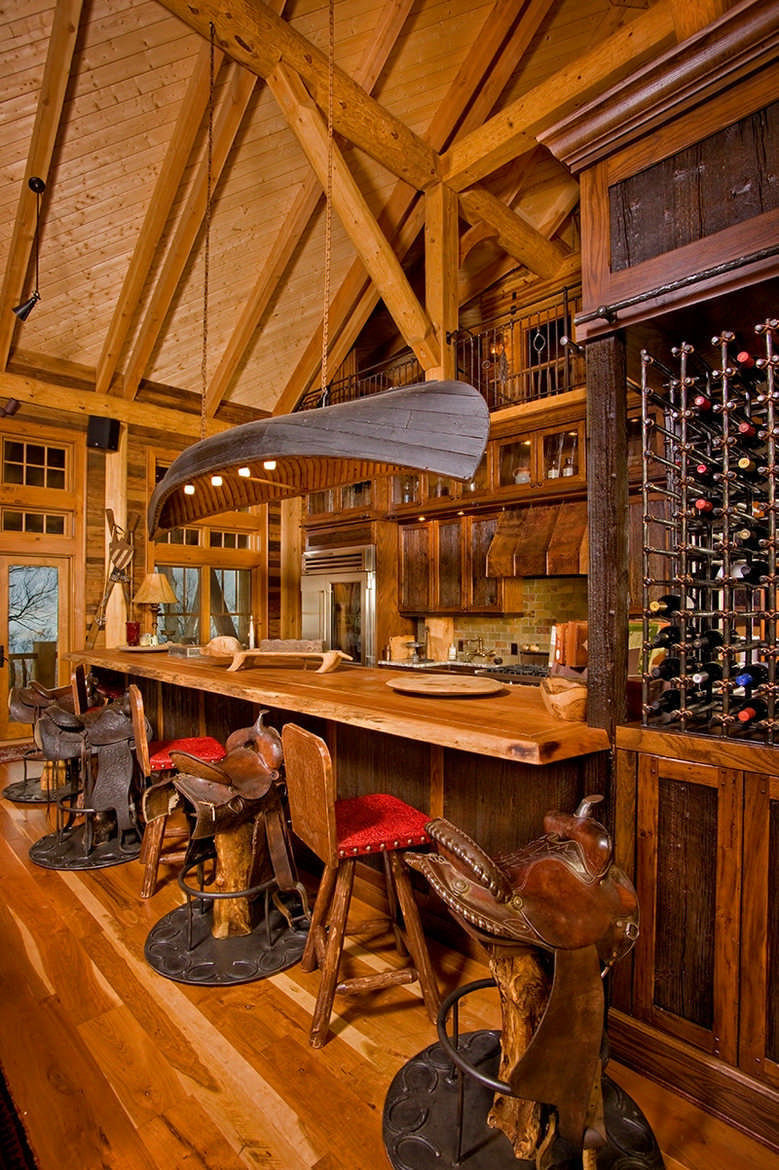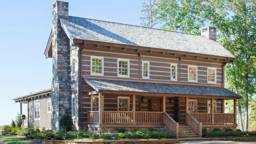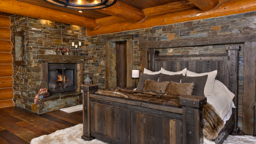"Natural element log homes,” sometimes referred to as “hybrid log homes,” or “mixed material log homes,” are gaining in popularity. So what, exactly, does this mean?
 A classic example of a natural elements--or "hybrid"-- log home.
A classic example of a natural elements--or "hybrid"-- log home.
Natural element log homes = custom design
“The key ingredient to the natural element home is design,” says Jock Davidson, VP of sales and marketing at Tennessee Log and Timber Homes. “It’s not if you use natural element components but how they’re used and incorporated in the design. By incorporating log, timbers, stone and even reclaimed brick and antique woods in floors, ceilings and timbers, we can create a look and feel that cannot be replicated. Each home would be a one-of-a-kind design and unique in every sense of the word.”Tennessee Log and Timber Homes has been producing natural element log homes for more than 30 years. “We just didn’t call them that,” Davidson says. “Now, however, we are focusing further on unique accents and innovative designs that create not only a home, but an experience.” Tennessee’s Elk River series of homes, begun in the 1970s, revealed to the company that people were attracted to its design concept, but wanted to add other materials to customize the look. “We recognized the phenomenon as another step in our product evolution, and when we ventured into timber framing, it became even more pronounced,” Davidson says. “People are looking for an escape, a comfortable, casual setting, which renews them in quiet ways,” adds Tennessee Log Homes Architect Alexander Walker. “They want to feel like they and their home are a part of nature. They have a high respect for nature, and usually want to minimize the disturbance, and become a part of the setting.” To capitalize on the soaring popularity of the “customizing with nature” trend, Tennessee developed a new division: Natural Elements Home.
Partnering with MossCreek Designs, the new group shaped cutting-edge designs from an old concept. The homes, built with a timber frame base, exceed the definition of a standard timber frame home. “Natural Element Homes are distinctive, personalized homes with extensive selections of timber frame, log, and custom-crafted elements,” Davidson says. The inspiration for many of these homes comes from traditional architecture found across the United States and Western Europe where MossCreek designers studied and interpreted the best of each region and its historic style. These styles are rooted in tradition and create an altogether new style with fun and whimsical references to past methods of log and timber construction.
The design of the natural elements log home ultimately blends and integrates with the landscape. “For instance, a mountain home must consider the heights of the views,” Walker says. “Many times in the mountains, the surrounding views are 3,000 feet higher than your line of sight. You don’t want your client to have to walk over to the window to see the tops of the surrounding mountains. You must make certain that the entire views are visible from the desired point of observation. Also, mountain homes always have more rain and snow, so you must consider not only snow loads, but good protection for the residence from dampness and run-offs.” Conversely, the prairie home will have more horizontal views and are usually much drier. “We need to be more concerned with sun penetrations on the horizon,” Walker says.
Materials Used in Building Natural Element Log Homes
In addition to the relationship between design and setting, natural element homes incorporate unique materials. Buyers today are particularly fond of reclaimed barn timbers (with wormholes, nails, and a distinctive patina) made from American chestnut, mixed oak, pine, poplar, hickory, maple, beech, and hemlock. Reclaimed bricks, doors, windows, mantels, and flooring from antique structures transform an standard design into a vintage lodge. The theme may be carried to the exterior, where porch columns and railings, stairs, and entry gates are built from mountain ivy, hand-peeled cedar and locust, or even tobacco barn tier poles and sticks.The philosophy: More reclaimed materials leads to a more genuine and richer look. Natural element homes don’t need to be large. We’re designing homes from 1,800 to more than 3,000 square feet,” Davidson says. “ The mid-range homes — around 2,500 square feet — are the most popular.” Pricing for these homes, Davidson says, tends to be around $200 per square feet. The natural homes movement is a logical response from the log and timber frame industries to the custom home demand. The percentage of buyers looking to build custom homes is huge; the percentage of those looking to build strictly log or timber is small.
At log-home and timber shows across the country, prospective buyers have quizzed every company on natural or element homes. Developments have already been established in the Southeast. “Our primary markets seem to be either in high-end developments in Western North Carolina and in pockets where higher-end developments are located,” Davidson says. “The natural element log home is appropriate for the customer who is looking for the relaxing atmosphere of a log or timber home combined with the design flexibility of conventional methods,” Walker says. “As a design architect, it opens up a whole new area of possible combinations and solutions for our clients.”
Tradition restyled
 The wine bar in this hybrid log home is anything but traditional.
The wine bar in this hybrid log home is anything but traditional.
His mountain homes are reminiscent of the Adirondack camps of the East or national park lodges of the West with deep overhangs, multi-gabled (level) rooflines and muscular columns that “hunker down into the earth and create a feeling of permanence and strength,” he says. “America is a melting pot and rebels against anything that is pure,” Soellner says. “This style is a combination of architectural types and elements that reflects the setting and the client’s taste.” This style of home features large stonework, massive logs, heavy trusses, and deeply textured cedar shakes.







_11868_2023-12-20_08-12-256x288.jpg)



